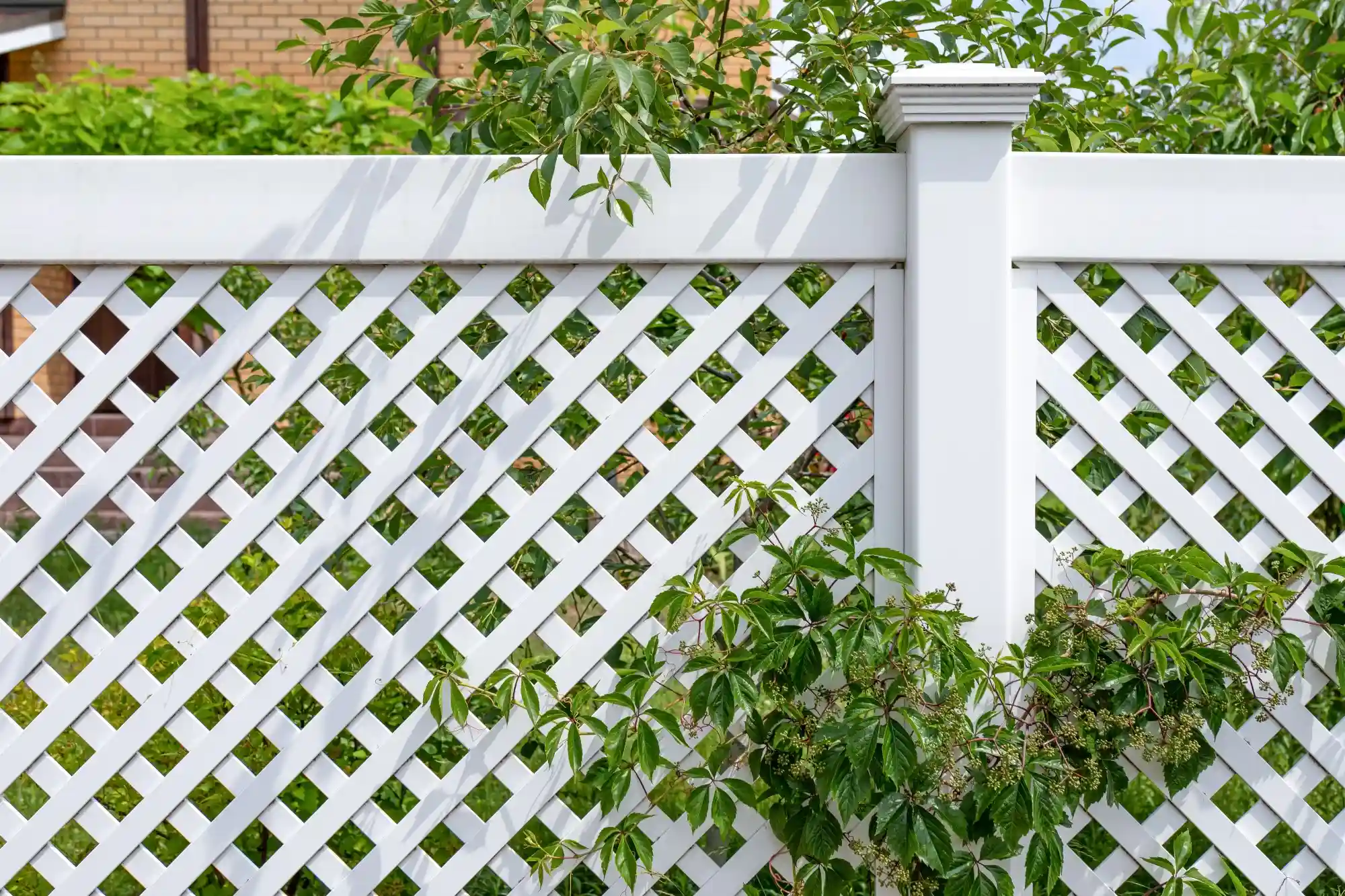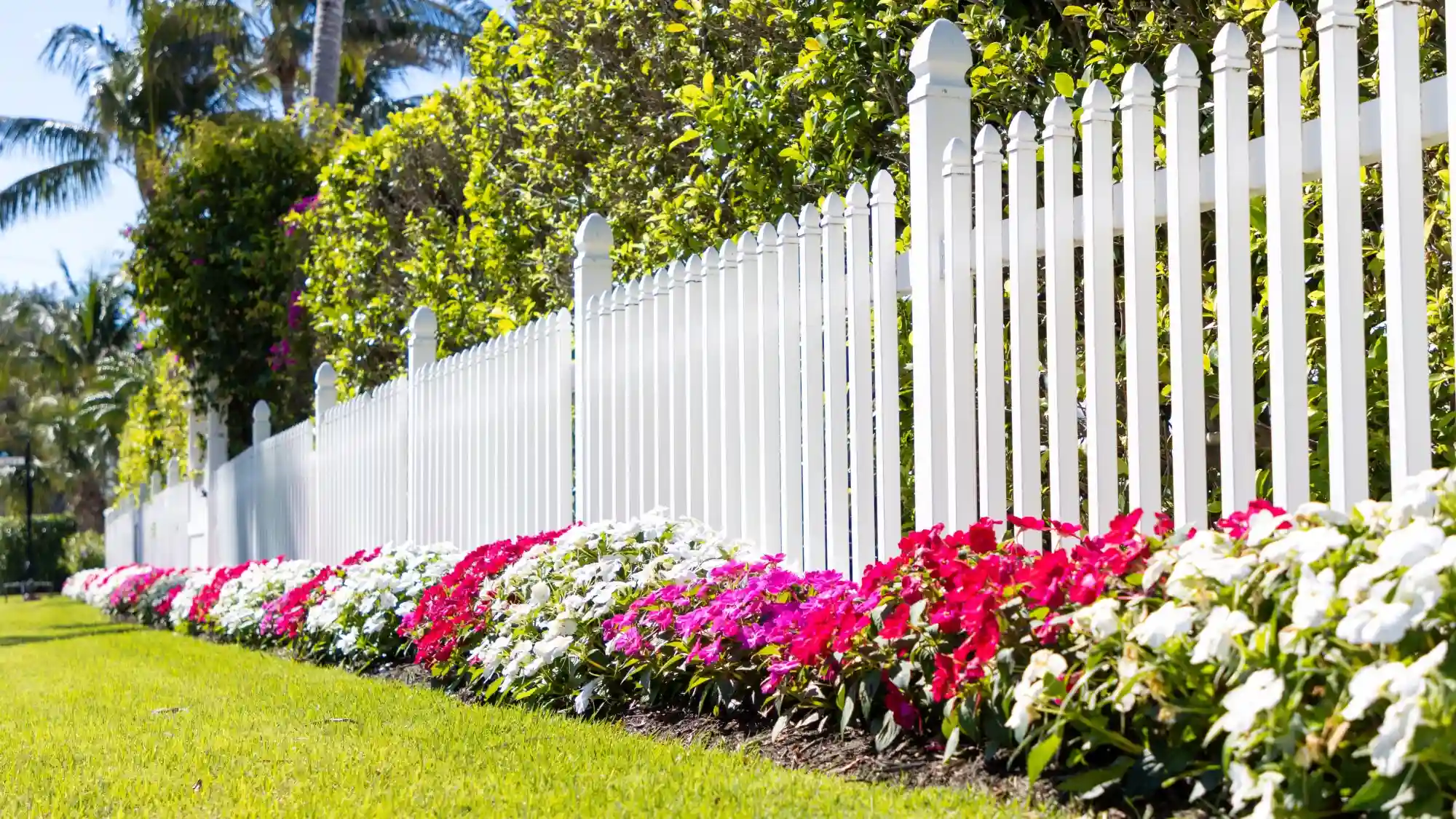When you're planning upgrades to your home, one question keeps coming up: does a fence add value to a home? If you're making decisions with resale in mind, it’s worth knowing whether a fence will boost your bottom line or just eat up your weekend.
Here’s the short answer: A solid, well-built fence can return 30% to 70% of what you paid and help your home sell over two weeks faster than one without a fence. But more than that, it creates something buyers are hunting for — private, usable space that feels like part of the home.
Below, we’ll break down how much value a fence really adds, which materials deliver the best results, and what makes the upgrade worth it.
How Much Value Does a Fence Add to Your Home?
The National Association of Realtors says fencing can increase home value by up to 20% under the right conditions. That said, real-world returns usually depend on a few simple factors: what you build, where you build it, and who installs it.
Average ROI breakdown:
- Conservative estimate: 30% cost recovery (basic chain link or DIY wood fence).
- Typical return: 50% cost recovery (professional vinyl fence or cedar fence installation).
- Premium scenarios: 70% cost recovery (high-end materials in family-oriented neighborhoods).
So, if you put $10,000 into fencing your yard, you might see $3,000 to $7,000 back in added value. But the benefits don’t stop there.
Why Fences Increase Home Value Beyond ROI
Faster sales: Homes with fenced yards sell about 18 days quicker on average. In the Chicago market, that kind of speed can seriously cut down on holding costs and stress.
Bigger buyer pool: 67% of real estate pros say fences make a home more appealing — especially to families with young kids or pets. That’s a huge slice of the market in most neighborhoods.
Move-in ready feel: A clean, secure fence shows buyers the home is cared for and ready to enjoy. That’s a selling point you don’t need to explain.
Best Fence Materials That Add the Most Property Value
Cedar Wood Fences: Natural Beauty That Buyers Love
Cedar fences consistently deliver strong returns because they appeal to buyers seeking natural materials and timeless aesthetics. Cedar's natural resistance to insects and weather makes it a smart investment that doesn't require constant maintenance.
Why buyers choose cedar:
- Appeals to those looking for natural, organic materials.
- Ages into a silver-gray color that still looks great.
- Adds privacy for family-friendly backyards.
- Performs well in suburban areas with high resale activity.
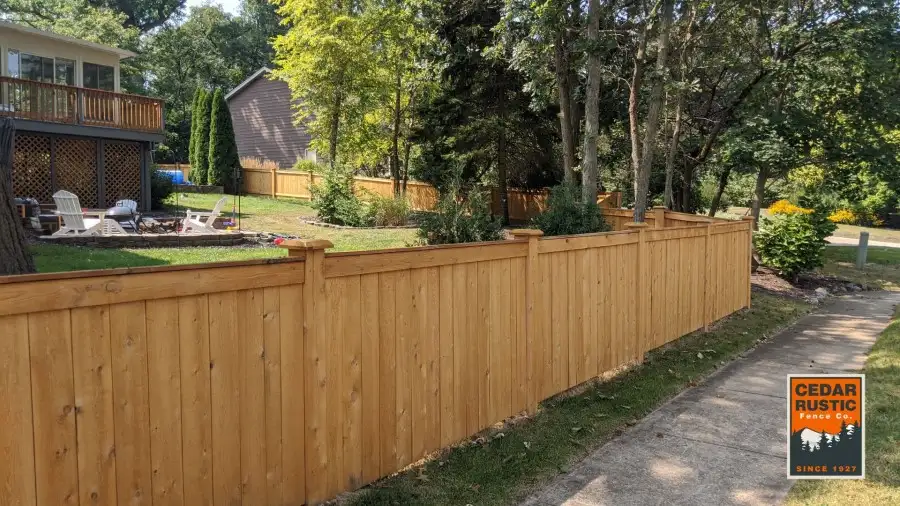
Vinyl Fencing: The Smart Investment for Busy Families
Modern homebuyers increasingly value low-maintenance features, making vinyl fences particularly attractive. While the upfront investment is higher, the lifetime warranty and zero maintenance requirements create strong buyer appeal.
Why vinyl adds value:
- No need for staining, painting, or major repairs
- Looks new even after years of exposure
- Popular with working parents and professionals
- Works well for full-privacy fence installations
Aluminum Fences: Security Meets Curb Appeal
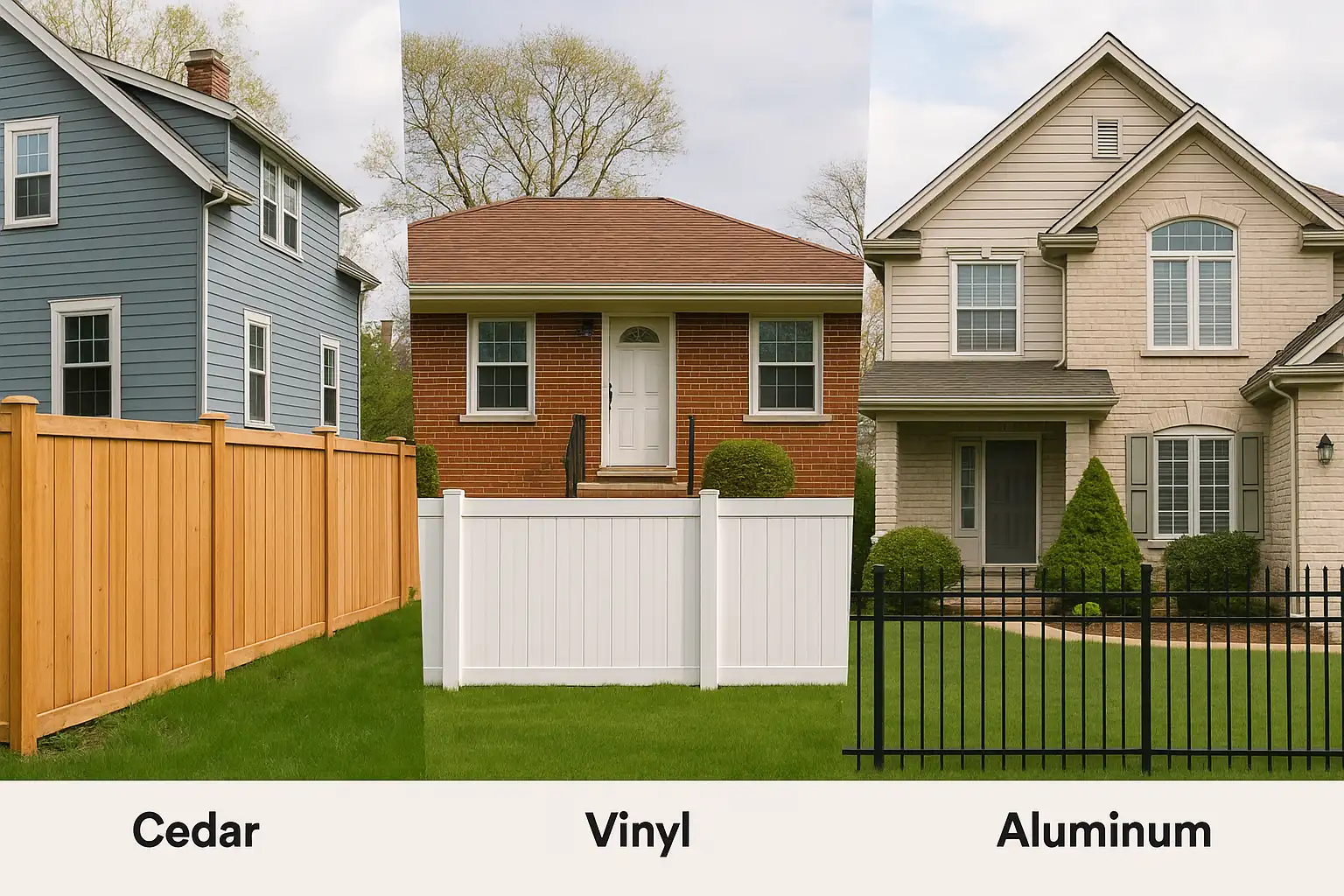
Aluminum fencing offers the elegant appearance of wrought iron without the maintenance concerns. This combination of security and aesthetic appeal makes it particularly valuable for pool areas and front yard applications.
Why aluminum is a strong choice:
- Clean, high-end look adds visual appeal
- Doesn’t rust or deteriorate over time
- Ideal for pool safety compliance
- Keeps views open while securing the space
When Installing a Fence Adds Maximum Value
Family-Oriented Neighborhoods: Where Fences Are Essential
In suburban areas with many young families, a fenced yard often becomes a non-negotiable feature. Parents prioritize homes where children can play safely, making fence installation critical for competitive positioning.
When a fence adds serious value:
- Neighborhoods with elementary schools close by
- Areas filled with family households
- Streets where most homes already have fences
- Properties located near roads with steady traffic
Pet-Friendly Communities: Instant Move-In Appeal
With over 62% of households owning pets, a sturdy fence creates immediate appeal for this massive buyer segment. Pet owners view fenced properties as move-in ready, eliminating the hassle and expense of fence installation.
Privacy-Conscious Markets: Urban and Suburban Demand
In areas where homes are built close together, privacy fencing addresses one of buyers' top concerns. A privacy fence transforms outdoor space from an exposed area into a private oasis where families can relax and entertain.

Fence Installation Mistakes That Hurt Property Value
Over-Fencing for Your Neighborhood
Installing high-end fencing in a modest neighborhood can work against you. If most nearby homes use basic materials, adding something too elaborate might feel out of place. Buyers aren’t likely to pay extra for upgrades that don’t match the area.
Poor Installation Quality: The Value Killer
Crooked posts, uneven lines, or sagging gates send a bad message. Whether from poor DIY execution or cheap labor, bad fence jobs make buyers question how the rest of the property has been cared for.
Warning signs of value-damaging installation:
- Fence lines that don’t run straight
- Gates that drag or feel loose
- Rust, rot, or visible wear
- Materials that look temporary or flimsy
Wrong Material Choices
Chain link fences in upscale neighborhoods or overly ornate fencing in casual areas can hurt rather than help property value. Material choice must match buyer expectations for your specific market.

Professional Fence Installation vs. DIY: Value Impact
Why Professional Installation Adds More Value
When the job’s done right, it shows. Pros make sure fences are level, foundations are secure, and everything meets code. That kind of quality boosts both visual appeal and long-term value — and it’s something buyers notice immediately.
Benefits of working with professionals:
- All permits and local codes handled
- No inspection surprises down the line
- Warranty coverage adds resale value
- Clean finish that looks great in listing photos
DIY Installation Risks to Property Value
Cutting corners to save money can backfire. If the fence leans, shifts, or violates local rules, you could end up losing more than you saved. Buyers with experience will see the flaws right away, and that can hurt your bottom line.
DIY mistakes that cost more later:
- Inadequate post spacing causing fence failure
- Improper foundation depth leading to leaning posts
- Code violations requiring expensive corrections
- Amateur appearance that reduces overall curb appeal
Strategic Fence Planning for Maximum Property Value
Research Your Local Market Before Choosing Materials
Take a drive around and see what kinds of fences are on similar homes nearby. Local trends can guide your choices, helping you select fence types that match what buyers expect — not just what you personally prefer.
What to look for when researching:
- What height do most fences have?
- Are privacy fences or decorative styles more common?
- Does your HOA limit materials or colors?
- What do real estate agents suggest for your area?
Consider Your Timeline for Maximum Value
Think about how long you’ll own the home. Whether you're staying put or selling soon, your timeline should shape your fencing strategy.
- Selling within 2 years: Choose low-maintenance options like vinyl or aluminum. Keep the look neutral so it appeals to more buyers.
- Staying 5+ years: You can lean into personal preferences. A vinyl fence with wooden colors or a cedar fence may be a good choice if you want something natural that still offers resale potential.
- Investment properties: Durability matters more than style. Vinyl is a smart option that keeps upkeep costs low and appeals to renters.
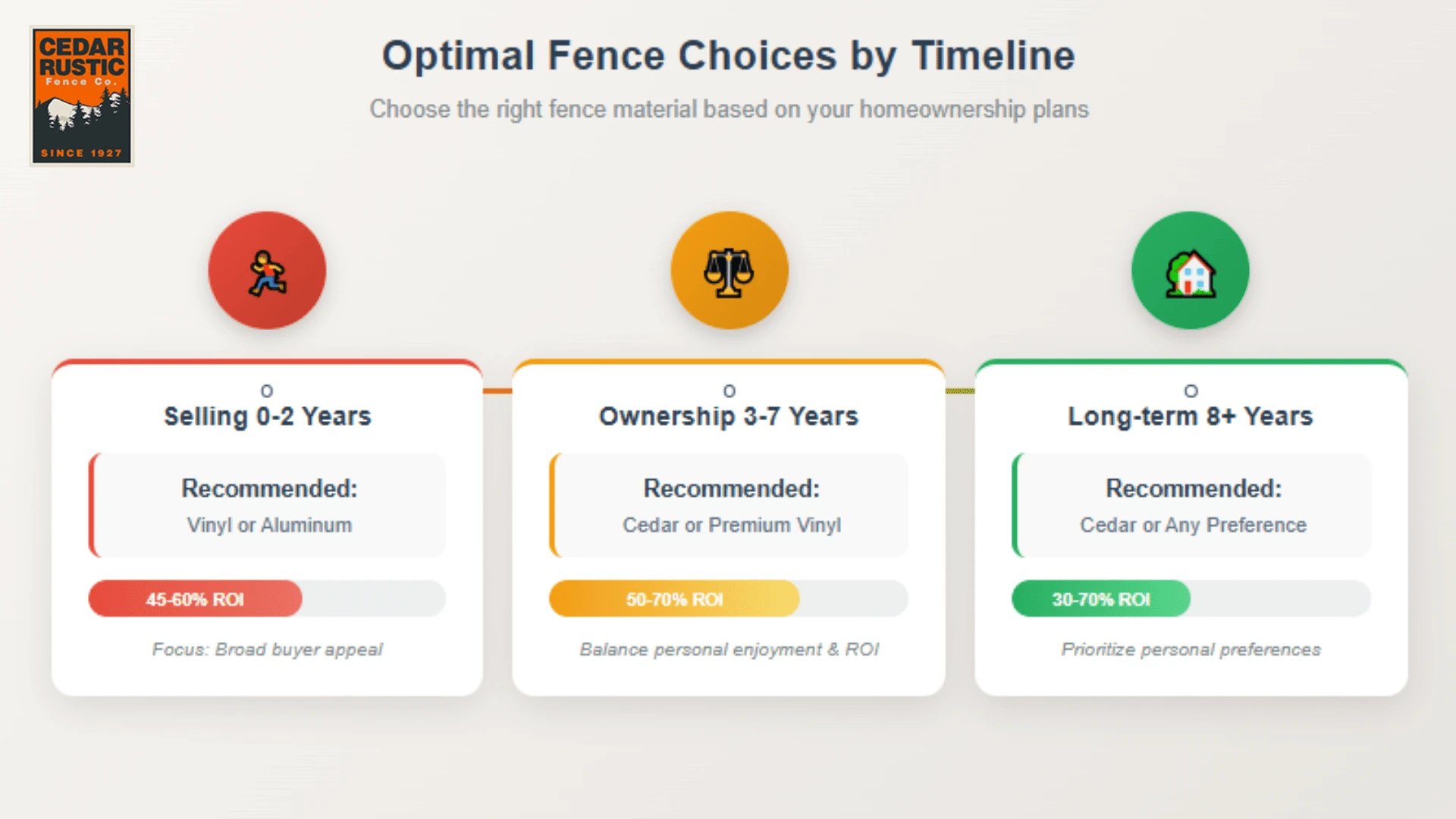
How Fences Impact Different Buyer Segments
Families with Young Children: Safety First
Parents view a fenced yard as essential safety infrastructure. A sturdy fence creates a safe space where children can play without constant supervision, making your property significantly more attractive to family buyers.
High-value features for families:
- Six-foot privacy fencing
- Self-closing gates with safe latches
- Smooth surfaces with no splinters or sharp points
- Clear sight lines from house to yard
Pet Owners: Move-In Ready Appeal
With more households welcoming pets, a fenced yard has become a key feature for many buyers. Pet owners often filter listings by whether a fence is already in place, making pre-fenced properties much more appealing from the start.
Empty Nesters and Retirees: Low Maintenance Appeal
Buyers in this group are often looking for homes that don’t come with long to-do lists. Low-maintenance fencing, like vinyl or aluminum, stands out as a strong selling point for those who want clean, lasting results with minimal upkeep.
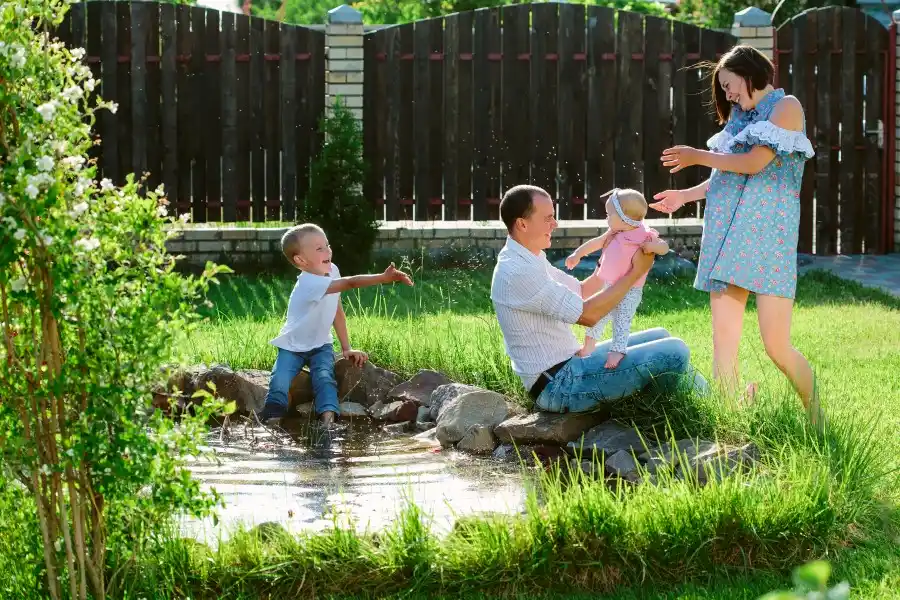
Regional Factors: Chicagoland Market Specifics
Climate Considerations for Long-Term Value
Chicago weather can be rough on outdoor features. Between icy winters and hot, stormy summers, your fence needs to handle constant change. Picking materials that resist damage keeps your yard looking great and protects your investment long-term.
Climate-smart material choices:
- Cedar stands up to moisture and shifting temperatures
- Vinyl keeps its shape through seasonal extremes
- Aluminum avoids rust in damp, unpredictable weather
- Stay away from options that need constant upkeep
Neighborhood Character in Chicagoland Suburbs
Chicagoland suburbs all have their own identity — and buyers notice when a fence doesn’t fit. Picking styles and materials that match the surrounding area helps your home blend in, not stand out for the wrong reasons.
What to know about local preferences:
- Family-focused suburbs usually lean toward tall privacy fences
- Historic areas often favor natural wood options like cedar
- Newer subdivisions tend to use uniform vinyl or aluminum
- Urban blocks may need privacy without blocking visibility
Maximizing Fence ROI: Expert Tips
Timing Your Fence Installation
Adding a fence two to three years before selling gives it time to settle into the space and makes it feel like a natural part of the home. If it looks freshly installed, buyers might assume it’s hiding flaws.
Coordinate with Other Home Improvements
Installing a fence alongside landscaping or other exterior improvements creates a complete look that feels intentional. This kind of curb appeal can significantly boost buyer interest.
Maintain Properly for Long-Term Value
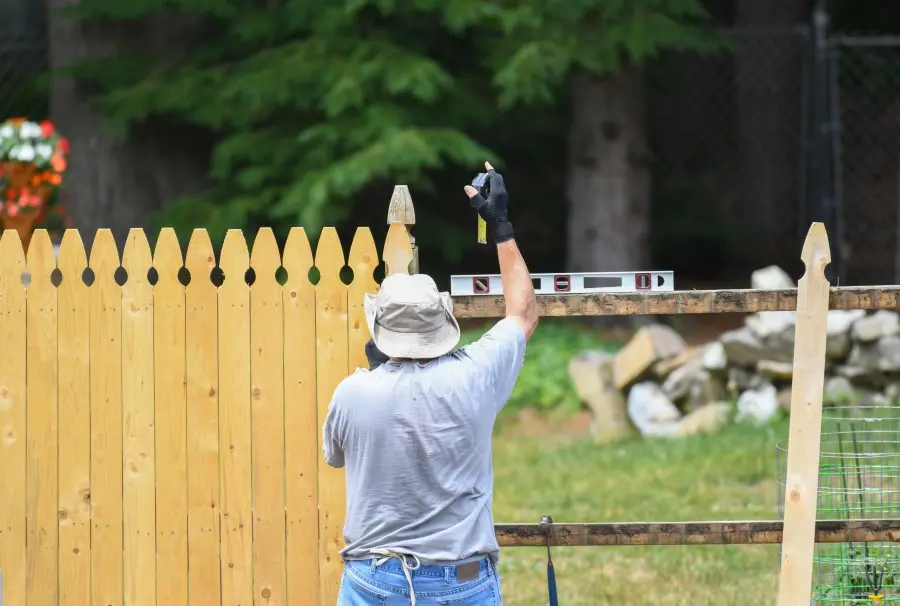
Even the best fence loses value if it’s falling apart. Staying on top of repairs and cleaning helps preserve both the look and function of the fence — and shows buyers that the entire property has been well cared for.
Do Appraisers Consider Fences When Determining Home Value?
Yes, appraisers do take fences into account, but the impact depends on the area and how well the fence fits the property. In the right neighborhood, a well-installed fence that’s in good shape can increase appraised value by adding privacy, security, and curb appeal.
What appraisers look for:
- Condition and overall appearance of the fence
- Whether the style fits the home and the neighborhood
- How well it adds to security and usability
- If it meets local building codes or HOA rules
- Overall effect on marketability and buyer interest
Common Questions About Fence Value
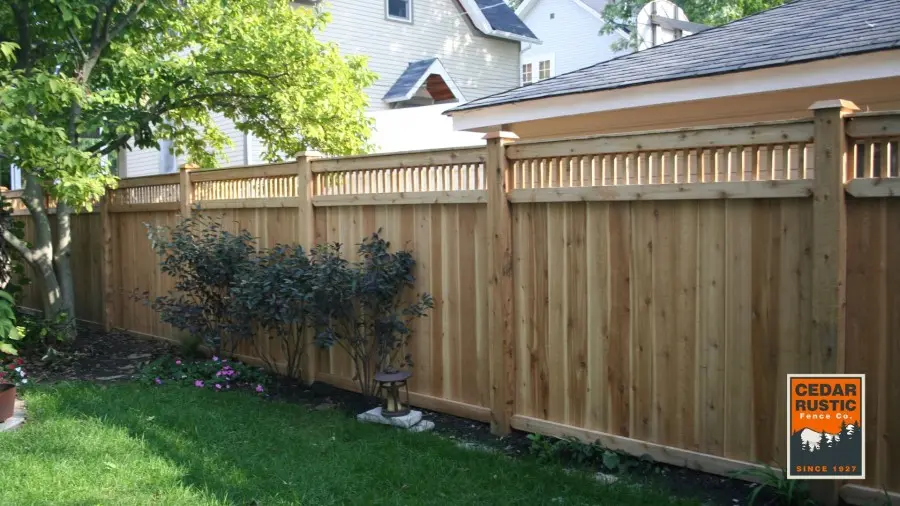
What fence height adds the most value?
A six-foot privacy fence is the sweet spot. It gives buyers the privacy and safety they want without looking too imposing. Decorative fences are fine but usually add less practical value.
Should I replace an existing fence before selling?
Only if it’s in rough shape. If the existing fence is clean and sturdy, replacing it might not bring much return. Simple repairs and cleanup often do the trick.
How long does fence installation take?
For most homes, professional fence installation takes between one and three days. The timeline can stretch with poor weather or if permits are delayed.










